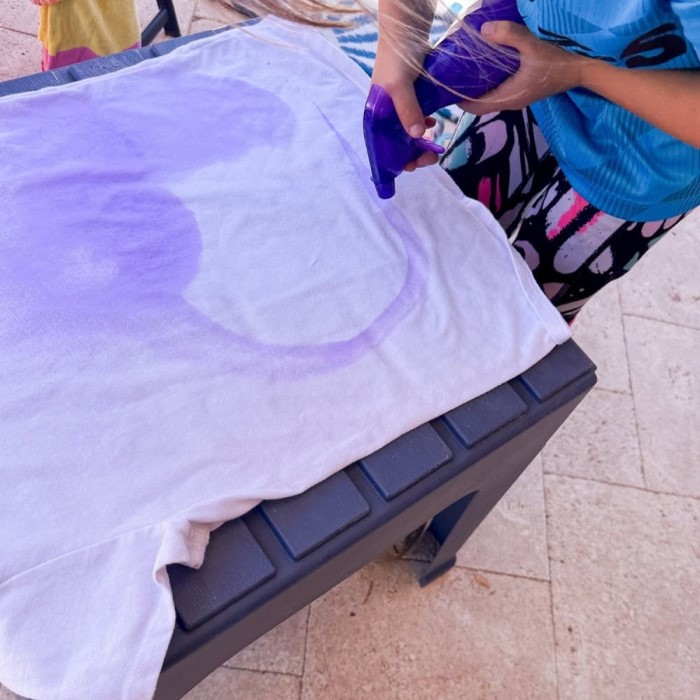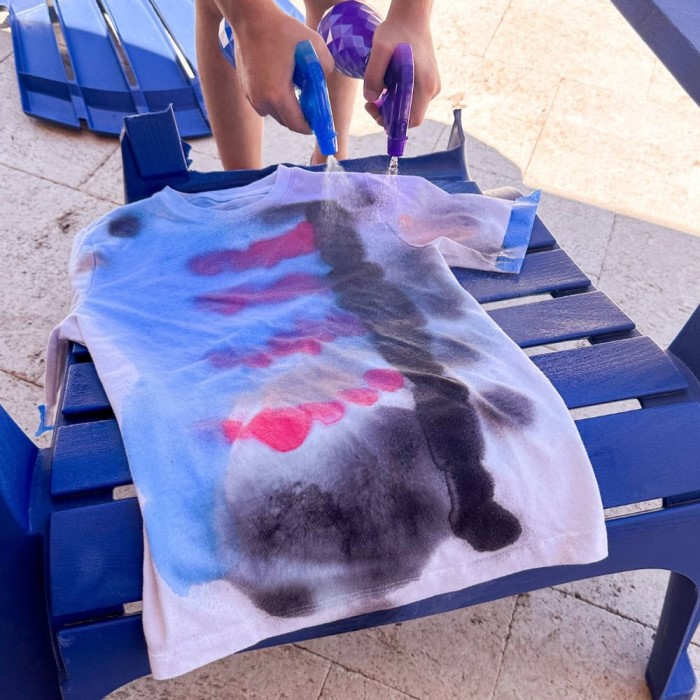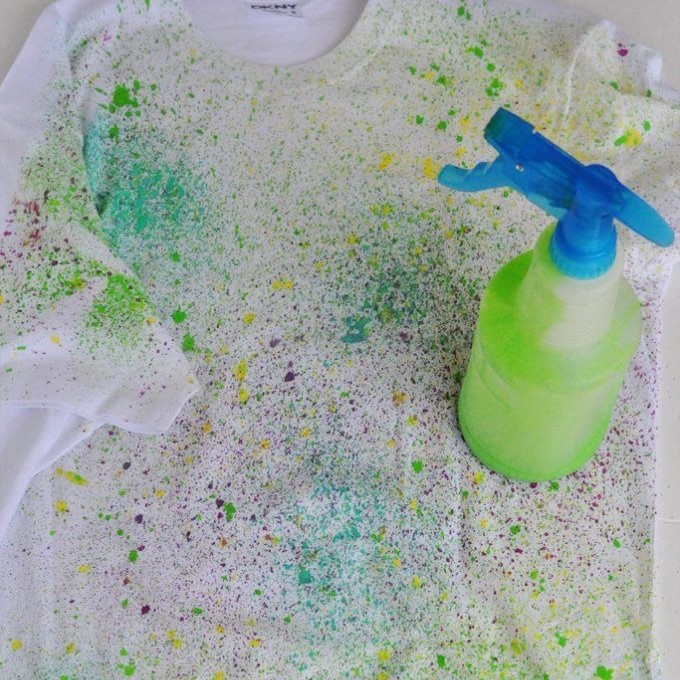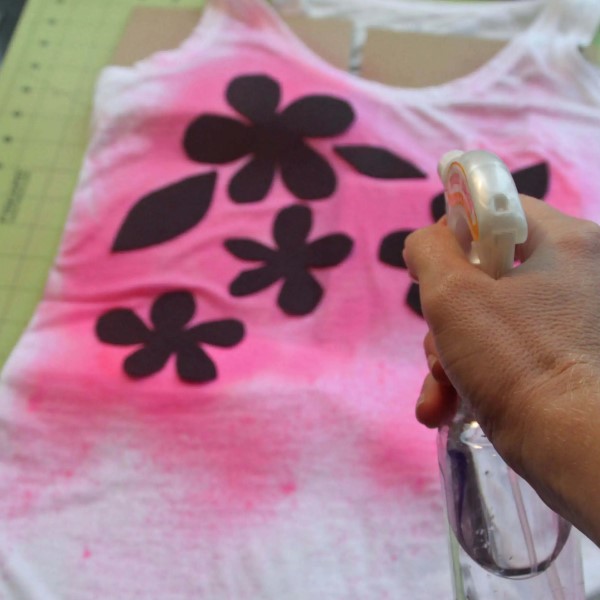Introduction
In a world increasingly focused on sustainability, artists and DIY enthusiasts prioritize eco-friendly options in their creative projects. One such project, spray paint shirts, has gained popularity for its fun and artistic possibilities, but it often comes with concerns about the environmental impact of conventional materials and methods. By using eco-friendly techniques and materials, you can create stylish, custom shirts that reflect your unique personality while protecting the planet. This article will guide you through the best eco-friendly options for making spray paint shirts at home, discussing materials, techniques, and tips for achieving vibrant results.

The Appeal of Eco-Friendly Shirt Painting
The shift toward eco-conscious crafting stems not just from environmental concerns, but also from a desire for healthier living and creativity. Here are a few compelling reasons why eco-friendly shirt painting is appealing:
1. Healthier for You
- Non-Toxic Materials: Traditional spray paints often contain harmful chemicals and VOCs. Eco-friendly alternatives are typically made from natural ingredients, reducing exposure to toxins that can affect your health.
- Safer for Skin: Using water-based paints or natural dyes minimizes skin irritation, making the painting process more comfortable, especially for those with sensitive skin.
2. Positive Environmental Impact
- Sustainable Practices: Eco-friendly materials often come from renewable sources and are biodegradable, reducing waste. Natural dyes, for example, can be derived from plants and vegetables that break down easily.
- Reduced Pollution: By opting for non-toxic products, you help decrease air and water pollution tied to the production and use of chemical-heavy spray paints.
3. Fostering Creativity
- Unique Results: Engaging with sustainable materials allows for experimentation with textures and colors. Natural dyes can produce beautiful, organic hues that are rarely found in conventional paint, leading to a more personalized design.
- Modern Techniques: Adopting eco-friendly methods often involves innovative techniques that can inspire creativity. From airbrushing to using sprayers, you can explore various styles and approaches.
Eco-Friendly Materials
The first step in crafting eco-friendly spray paint shirts is selecting the right materials. Below is a list of recommended eco-friendly options that can enhance your creative process:
1. Water-Based Fabric Paint
- Description: Water-based fabrics paints are an ideal alternative to traditional spray paints. They are non-toxic and easily removable with soap and water, minimizing concerns about mess and safety.
- Application: These paints can be used in spray bottles or airbrushes, allowing for smooth and even distribution on fabric. They require heat-setting but offer vibrant colors that last.
2. Natural Dyes
- Source: Natural dyes can be made from various plants, fruits, and vegetables. Common options include turmeric for yellow, beet juice for red, and spinach for green.
- Creative Techniques: Create your dyes by boiling the plant materials in water, then using the resulting liquid to paint your shirts. This option for spray paint shirts results in stunningly unique designs.
3. Eco-Friendly Spray Paints
- Brands: Look for brands that specialize in eco-friendly spray paints, which are often labeled as low-VOC or solvent-free. These products are designed to be environmentally friendly while still delivering quality results.
- Performance: Many eco-friendly spray paints are durable and adhere well to fabric when applied and cured correctly.
4. Reusable Stencils
- Benefits: Stencils allow for repeated designs without creating waste. Create stencils from durable materials such as cardboard or plastic, and clean them after each use for continued application.
- Unique Patterns: Using stencils opens up a world of creative possibilities—from detailed designs to bold graphics—without the need for single-use paper options.
Tools and Techniques for Eco-Friendly Spray Paint Shirts
Once you have chosen your eco-friendly materials, the next step is preparing and using the right tools and techniques for achieving quality results. Here are essential items and approaches:
1. Necessary Tools
- Spray Bottles: Use clean spray bottles for water-based fabric paint or natural dye mixtures. These provide the fine mist needed for detailed work while ensuring an even application.
- Protective Gear: Wear an apron, gloves, and a mask if necessary. While many eco-friendly paints are safe, some still require precautions during spray application to avoid any unwanted effects.
2. Preparing Your Workspace
- Drop Cloth: Lay down a drop cloth or old newspaper to protect your workspace from any drips or spills. This step makes cleanup easy after your painting session.
- Ventilation: Ensure your workspace is well-ventilated, especially if you’re using sprays. Open windows or work outside to maintain fresh air circulation.
3. Painting Techniques
Layering
- Understanding the Technique: Layering involves applying multiple coats of paint to achieve a rich and complex color palette on your shirt. This method allows you to create visual depth and texture in your designs.
- Base Coat: Begin by applying a base coat of your chosen color. This initial layer sets the foundation for the rest of your design. It’s essential to allow this base coat to dry completely before adding any additional layers to ensure proper adhesion.
- Adding Depth with Additional Colors: Once the base coat is dry, you can start layering other colors on top. Choose colors that complement each other to create a harmonious effect. Think about how the colors will interact; for instance, applying a lighter color over a darker base can create an eye-catching contrast.
- Creating Visual Dynamics: The layering technique allows for the creation of gradients and ombre effects. By applying colors gradually and mixing them during the process, you can achieve fascinating visual dynamics. This approach can draw the eye and add a unique element to your design, making it stand out.
Spray Distance
- Importance of the Correct Distance: Maintaining an appropriate distance between the spray nozzle and the fabric is crucial for achieving an even and consistent application of paint. This distance typically ranges from 6 to 12 inches.
- Ensuring Even Coverage: Spraying from the correct distance helps prevent issues such as drips or pooling of paint, which can ruin the overall appearance of your design. Keeping the nozzle too close may cause excess paint to concentrate in one area, leading to uneven texture.
- Experimentation for Effects: Don’t hesitate to experiment with different spray distances to see how it affects your application. Moving the nozzle closer can produce a more intense concentration of color, while spraying from further away can create a softer, misty effect.
- Finding Your Style: Understanding your own preferences through practice will help you determine the ideal distance for various effects. Each distance can yield different results—further away for light washes and close for bold saturation—allowing you to customize your designs according to your artistic vision.
Caring for Your Eco-Friendly Spray Paint Shirts
To maintain the beauty and longevity of your spray paint shirts, proper care is essential. Here’s how to keep your creations looking vibrant:
1. Washing Guidelines
- Gentle Cycle: Wash painted shirts in cold water on a gentle cycle. This gentle treatment reduces wear on the fabric and preserves the paint’s quality.
- Avoid Fabric Softeners: Skip fabric softeners, as they can interfere with paint adhesion and damaging the painted visual.
2. Drying Techniques
- Air Dry: Opt for air drying instead of using a dryer. Lay shirts flat or hang them up to dry naturally, preventing excessive heat damage to the painted areas.
- Protection from Sunlight: While drying, keep your shirts out of direct sunlight for extended periods to prevent fading.
3. Storage
- Safe Storage Solutions: Fold shirts neatly or hang them to prevent creasing and damage. Store the shirts in a dry place to avoid moisture that can lead to mold or mildew growth.
- Avoid Tight Spaces: Ensure there is enough room for your painted shirts to breathe within their storage. Tight spaces can create friction and lead to damage over time.
FAQ About Spray Painting Shirts
As you embark on the creative journey of making spray paint shirts, common questions may arise regarding care and durability. Here are some frequently asked questions:
Does spray paint come off shirts?
Spray paint can come off fabrics if treated properly. The longevity of the paint depends on the type of paint used. However, choosing high-quality, fabric-specific spray paint significantly improves adhesion to the fabric.
Can you wash a spray-painted t-shirt?
Yes, once properly set, a spray-painted t-shirt can be washed. Use cold water and a gentle cycle to maintain the integrity of the paint design.
What type of paint do you use on T-shirts?
For eco-friendly options, use water-based fabric paints or natural dyes specifically designed for fabric applications. These options ensure the paint adheres well and remains flexible.
How long do airbrush T-shirts last?
The lifespan of airbrush t-shirts varies based on your care and paint quality. With proper washing and care, many can last for years without significant fading or cracking.
Conclusion
In conclusion, creating spray paint shirts with eco-friendly materials is a beautiful way to express your creativity while prioritizing the health of the planet. By selecting non-toxic paints and following sustainable practices, you can produce stunning and personalized shirts while reducing your environmental footprint.

Adopting these eco-friendly methods allows for experimentation with colors and designs, making the crafting process enjoyable. So gather your materials, explore various techniques, and start creating vibrant, sustainable spray paint shirts right at home! Your artistic expression can reflect both your personal style and a commitment to environmental awareness. Happy crafting!


